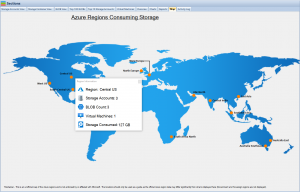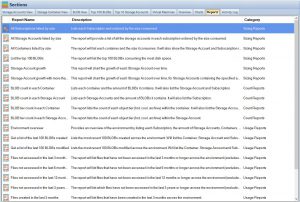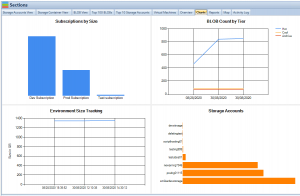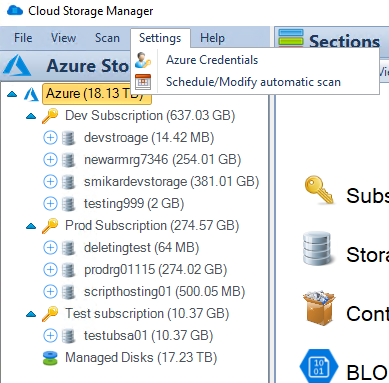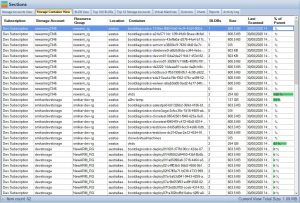Azure is Microsoft’s prized cloud computing service, functioning as a comprehensive suite that offers a vast range of capabilities. These capabilities are designed to propel businesses into the new age of digital transformation. But amid these various services and features, one particular offering stands out for organizations dealing with enormous volumes of data: Azure Data Lake. This platform acts as a cornerstone for data-centric operations, providing companies a robust architecture for data storage and analytics. Often, when organizations approach the idea of data storage and analytics, they’re bogged down by the limitations of traditional systems—limitations that Azure Data Lake was specifically designed to overcome. So, what makes it so different and effective? Is it the scalability, the analytics, or the security features? Or is it a blend of all these elements? In this comprehensive guide, we delve deep into the layers of Azure Data Lake, unraveling its complexities and discussing how it synergizes with other tools like Cloud Storage Manager to optimize your data strategy.
A Closer Look at Azure: Beyond the Cloud
Azure itself is an enterprise-grade cloud computing platform that seeks to meet the modern business’s every need, from machine learning and AI to data storage and analytics. Think of Azure as a vast toolbox with an ever-expanding set of tools. These tools range from machine learning services to Internet of Things (IoT) solutions, but today we’re focusing on Azure Data Lake—a unique tool designed for big data analytics. Why is a service like Azure Data Lake so crucial in the digital age? Well, in today’s world, data acts as the new oil. Just as oil fueled the machines and industries of the past, data powers the algorithms and analytics engines that drive modern businesses. Without an efficient way to store, process, and analyze data, companies will find it difficult to keep up with the competition. This is especially true as the volume, velocity, and variety of data continue to skyrocket. Azure Data Lake, therefore, serves as a vital component in a company’s data strategy, acting like the storage tanks and refineries in an oil field, optimizing and processing this modern-day ‘black gold.’
Dissecting Azure Data Lake
Azure Data Lake is a complex tool that offers a diverse range of functions and capabilities. It’s not a monolithic structure but rather an ecosystem designed for flexibility and scalability.
What Makes Azure Data Lake Unique?
Azure Data Lake is architected to provide multiple solutions for an organization’s big data needs. Unlike traditional databases that often require data to be structured and size-limited, Azure Data Lake allows for storage of all kinds of data, whether it’s structured or unstructured. It’s designed to handle extremely large files—think in terms of petabytes and beyond—and can manage trillions of objects. You can imagine it as a vast library where you can store a diversity of ‘books’ (your data files) in their original ‘languages’ (data formats), from JSON and CSV to Parquet and Avro. This feature is crucial because it eliminates the need for data transformation, thereby reducing the time and computational power needed to prepare data for analysis.
Key Functions of Azure Data Lake
Azure Data Lake is like a Swiss Army knife in the world of data, built with multiple functionalities each designed to tackle a different challenge.
Data Storage
The heart of Azure Data Lake is Azure Data Lake Store. If Azure Data Lake is a treasure trove of capabilities, the Data Lake Store is the cavernous room where the treasures are kept. It’s designed to be a hyper-scalable and secure repository that can store a high volume of data in various formats without requiring any changes to your applications as the data scales. To visualize this, consider a vast, automated warehouse that can stretch and shrink as needed. You can keep dumping different types of goods into it without worrying about running out of space or how to sort these goods. That’s Azure Data Lake Store for you.
Analytics
Another cornerstone feature is Azure Data Lake Analytics. This service provides on-demand analytics job services that simplify big data analytics. It allows you to run large-scale data jobs with a variety of programming languages like U-SQL, R, Python, and .NET. Think of it as a high-powered microscope that can magnify different layers of your data, enabling you to gain actionable insights. And the best part? You’re billed only for the computing resources used during the time the analytics jobs are running. This is not just cost-effective but also makes data analytics more accessible for organizations of all sizes.
Introduction to Azure Data Lake
Microsoft’s Azure platform has been a game-changer in the realm of cloud computing, offering an array of services designed to meet the multifaceted demands of modern businesses. One such stellar offering is Azure Data Lake—a storage and analytics service specifically designed for big data workloads. But what makes Azure Data Lake a must-have in the toolkit of data scientists, analysts, and businesses who work with large datasets? This comprehensive guide aims to provide you with an in-depth understanding of this complex yet indispensable service. Moreover, we’ll explore how Cloud Storage Manager can be your invaluable partner in optimizing its usage.
The Advantages of Opting for Azure Data Lake
Azure Data Lake isn’t just about storing and analyzing vast datasets; it’s about doing so with an efficiency and versatility that’s hard to match.
Unmatched Scalability and Processing Power
One of the most compelling advantages of Azure Data Lake is its virtually limitless scalability. The service is designed to handle petabytes of data and trillions of objects. Imagine a massive warehouse where the shelves stretch out infinitely in every direction. This extreme scalability ensures that you never have to worry about running out of storage space as your data grows.
Robust Security Measures
In the modern world, data is as valuable as gold. But unlike gold, data can be copied, and once out, it’s challenging to contain. That’s why Azure Data Lake comes equipped with formidable security features, including Azure Active Directory, firewalls, and encryption. It’s like having a state-of-the-art security system protecting a treasure chest; you can sleep easy knowing your valuable data is safe.
Versatile Integration and Language Support
The tool offers seamless integration capabilities with other Azure services and even allows for code development in multiple programming languages. Think of it as a multi-lingual scholar who can integrate into various social circles effortlessly. Whether you want to link it to Azure HDInsight for advanced analytics or Azure Synapse Analytics for real-time analytics, the possibilities are endless.
The Showdown: Azure Data Lake vs. Azure Blob Storage
In the realm of Azure’s storage solutions, there’s a common question: How does Azure Data Lake compare to Azure Blob Storage? The distinction between these two can sometimes be as murky as the waters of an actual lake, but when we clear the fog, several key differences emerge.
Diverging Functionalities
The primary difference between Azure Data Lake and Azure Blob Storage lies in their core functionalities and use-cases. While both serve the fundamental purpose of storing large quantities of data, Azure Blob Storage is like a jack-of-all-trades, ideal for general-purpose data storage needs. Azure Data Lake, on the other hand, is more like a specialist surgeon, engineered specifically for big data analytics. It’s like comparing a general physician to a neurosurgeon; both are doctors, but you’d only go to a neurosurgeon for specific, complex procedures.
Economic Factors
Another angle to consider is the cost. Both services have distinct pricing models that reflect their capabilities. Azure Blob Storage, being more generalized, often comes with a more straightforward pricing structure. Azure Data Lake, given its specialized functionalities, requires a more nuanced understanding of its pricing model. Think of it like choosing between a regular taxi and a luxury limo service. Both get you from point A to point B, but the level of service, and therefore the cost, differs considerably.
Elevating Azure Storage Efficiency with Cloud Storage Manager
Among the myriad of tools designed to optimize Azure services, Cloud Storage Manager stands out for its potent capabilities in enhancing Azure Data Lake’s efficiency.
Granular Insights into Storage Consumption
Cloud Storage Manager serves as your personal data auditor, meticulously scrutinizing every byte and bit that goes into your Azure storage account. It provides insights into how your storage resources are allocated and utilized, thereby allowing you to make data-driven decisions. Imagine this tool as your organization’s data detective, piecing together the clues that indicate your storage health.
Forensic Reporting on Storage Trends
Beyond mere monitoring, Cloud Storage Manager also offers comprehensive reporting features. This tool can break down Azure blob container sizes, giving you a well-defined view of your storage landscape. Imagine being a farmer with fields of crops. Wouldn’t you want a detailed report on the yield, soil quality, and future growth trends? Cloud Storage Manager serves as your agricultural expert, providing such reports for your data ‘crops,’ enabling you to predict future storage needs more accurately.
Realizing Cost Efficiency
The final feather in Cloud Storage Manager‘s cap is its cost-saving features. It identifies rarely accessed files and helps you optimize your Azure Storage Account sizes, thereby preventing any overprovisioning and wastage. It’s like having a personal financial advisor who constantly reviews your assets and advises you on where to save money.
Conclusion
In summary, Azure Data Lake is not just another service in Azure’s expansive portfolio; it’s a specialized powerhouse designed for handling big data workloads. Its rich features offer scalability, robust security measures, and versatile integration capabilities that are further enhanced when used in tandem with tools like Cloud Storage Manager. It’s like having a multi-tiered, high-security, and infinitely expandable digital vault where your data not only resides but also comes alive through analytics.
Frequently Asked Questions
Q1: What is Azure Data Lake?
Azure Data Lake is a comprehensive and secure data storage and analytics service that specializes in handling massive amounts of big data, offering high-performance processing capabilities.
Q2: How does Azure Data Lake differ from Azure Blob Storage?
Azure Data Lake is engineered for big data analytics and is highly specialized, whereas Azure Blob Storage is more general-purpose and is ideal for various types of unstructured data.
Q3: How can Cloud Storage Manager enhance Azure Data Lake’s efficiency?
Cloud Storage Manager offers detailed reporting capabilities and provides insights into your storage usage, enabling you to make data-driven decisions and realize cost efficiencies.
Q4: What are the security features of Azure Data Lake?
Azure Data Lake offers robust security through Azure Active Directory integration, encryption methods, and firewall settings.
Q5: Can I use multiple programming languages with Azure Data Lake?
Yes, Azure Data Lake supports multiple programming languages including SQL, R, Python, and .NET, making it versatile and user-friendly.
I hope this in-depth guide has been informative and answers all your questions about Azure Data Lake. Feel free to reach out if you have more questions or need further clarifications!


